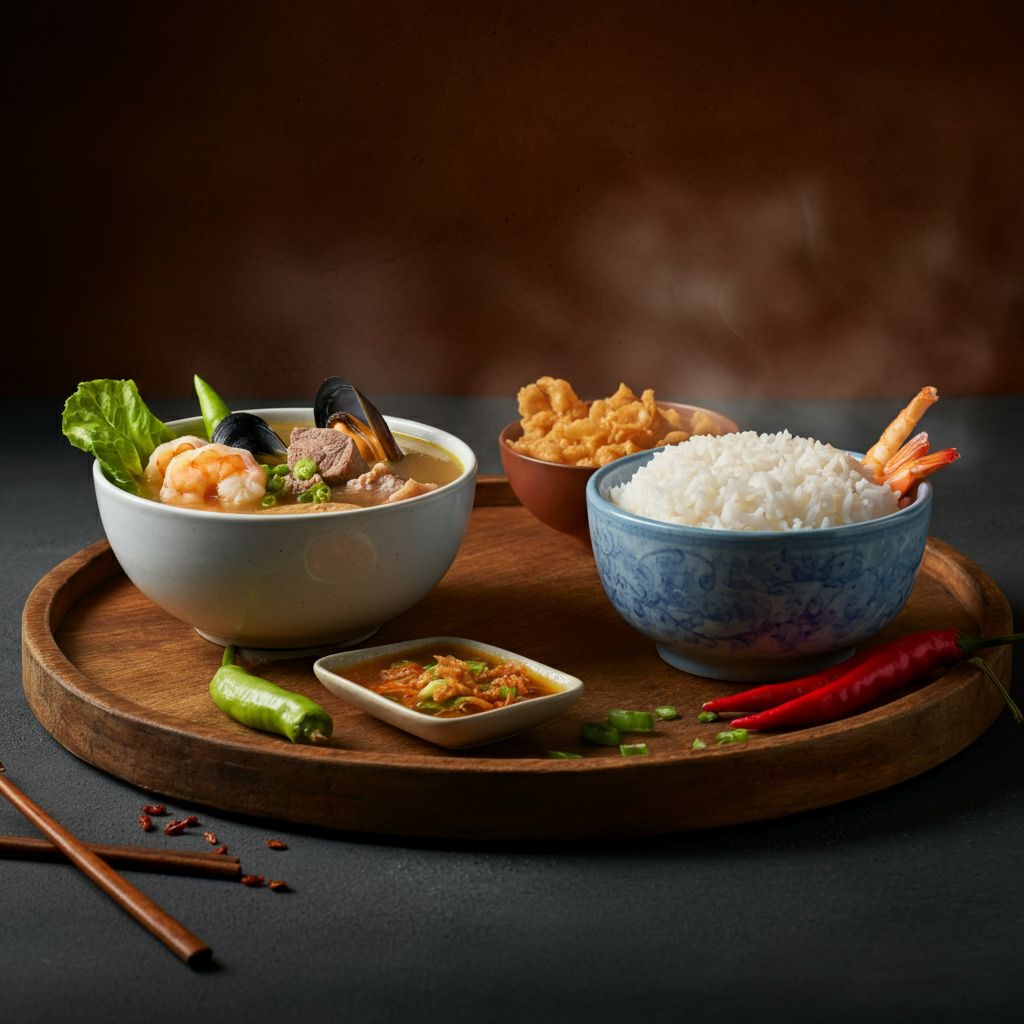Sinigang
Philippines
A sour and savory soup, often made with tamarind broth, and featuring meat (pork, beef, seafood) and vegetables.

Origins and History
Sinigang's origins are deeply rooted in Filipino history, predating even the Spanish colonial period. While pinpointing an exact origin is difficult, its foundations likely lie in the resourceful use of readily available ingredients. The souring agent, a crucial component, was initially derived from indigenous fruits like kamias (bilimbi) and guava, reflecting the pre-colonial Filipino palate. The use of tamarind, now a common ingredient, came later, possibly introduced during the Spanish era. The basic concept – a savory broth soured with a natural agent and combined with meat and vegetables – speaks to the practicality and ingenuity of Filipino cuisine.
Cultural Significance
Sinigang is more than just a dish; it's a symbol of Filipino home-style cooking and family gatherings. Often served during special occasions and holidays, it represents comfort, familiarity, and togetherness. Its popularity transcends geographical boundaries within the Philippines, uniting Filipinos across diverse regions and backgrounds. Sharing a bowl of sinigang is a common experience, fostering a sense of community and shared heritage. The dish's prevalence also speaks to the country’s deep appreciation for both simplicity and deliciousness in its culinary traditions.
Traditional Preparation
Traditional sinigang preparation begins with simmering the chosen meat (pork, beef, seafood, or even chicken) in water until tender. The souring agent, be it tamarind (sampalok), guava (bayabas), kamias, or other souring fruits, is then added, along with vegetables like kangkong (water spinach), gabi (taro), long beans (sitaw), and radish (labanos). Seasoning is simple, relying on salt, fish sauce (patis), and sometimes shrimp paste (bagoong) for depth of flavour. The beauty of traditional sinigang lies in its simplicity, allowing the natural flavors of the ingredients to shine.
Regional Variations
The beauty of sinigang lies in its adaptability. Regional variations abound, reflecting the diverse ingredients available across the Philippine archipelago. In some regions, the souring agent might be a specific fruit native to the area. The choice of meat also differs; for example, seafood is more prevalent in coastal areas, while pork is more common inland. Even the vegetables vary, with certain regions favoring specific types of leafy greens or root vegetables. These variations showcase the richness and creativity of Filipino culinary traditions.
Modern Interpretations
While the traditional methods are cherished, modern interpretations of sinigang are also emerging. Chefs are experimenting with different meats, vegetables, and souring agents, introducing innovative twists while respecting the dish's core elements. Some modern versions incorporate international ingredients, creating fusion dishes that appeal to a wider audience. This evolution keeps sinigang relevant while ensuring its continued appreciation by both traditionalists and adventurous food lovers.